10 Creative Backyard Garden Layout Ideas for Any Space
1. Raised Bed Grid Layout
Raised bed gardens offer excellent drainage and soil control while creating defined spaces in your yard. Arrange multiple beds in a grid pattern with pathways between them for easy access from all sides. This layout works perfectly for vegetable gardens as you can designate different beds for various plant families, making crop rotation simpler. The elevated design also reduces back strain during planting and maintenance.
2. Circular Mandala Garden
Create a striking focal point with a circular mandala garden design. This layout features concentric rings of plants radiating from a central point, often with pathways dividing the circle into segments like a pie. Plant taller species in the center and gradually decrease heights toward the outer rings. This eye-catching design maximizes growing space while creating a meditative spot in your yard.
3. Vertical Garden Walls
When ground space is limited, build upward with vertical garden walls. Install wall-mounted planters, trellises, or repurposed pallets to grow herbs, flowers, and even vegetables. This space-efficient approach transforms blank walls and fences into lush growing areas. Vertical gardens are perfect for urban settings or properties with limited square footage.
4. Cottage Garden Layout
Embrace organized chaos with a cottage garden design featuring dense plantings of flowers, herbs, and vegetables in seemingly random arrangements. This naturalistic style combines ornamental and edible plants, creating a relaxed, whimsical atmosphere. The informal layout encourages beneficial insects and requires less maintenance than more structured designs.
5. Kitchen Garden Layout
Position your garden close to your cooking space with a kitchen garden design. Arrange herbs, vegetables, and edible flowers in small, accessible beds or containers near your home’s entrance or kitchen window. This practical layout ensures fresh ingredients are just steps away when cooking and encourages daily harvesting.
6. Keyhole Garden Design
Carry out a keyhole garden—a circular raised bed with a notch cut into one side creating access to a central composting basket. This efficient design allows you to reach all plants without stepping on soil and continuously feeds them as compost breaks down in the center. It’s especially effective in dry climates as it conserves water and nutrients.
7. Spiral Herb Garden
Construct a spiral-shaped raised bed that creates multiple microclimates in a small footprint. The spiral structure provides varying sun exposure, drainage, and soil conditions. Plant moisture-loving herbs at the bottom and drought-tolerant varieties at the top. This space-efficient design packs many herb varieties into a compact, visually interesting feature.
8. Japanese-Inspired Zen Garden
Create a tranquil retreat with a Japanese-inspired garden featuring carefully placed rocks, gravel, minimal plantings, and perhaps a small water feature. This meditative design emphasizes negative space and clean lines, offering a peaceful contrast to busier garden areas. The simplicity makes maintenance straightforward while providing year-round visual interest.
9. Four-Square Garden Layout
Divide your garden into four equal quadrants with intersecting pathways, mimicking traditional European garden designs. Each section can house different plant categories—vegetables, herbs, flowers, and fruits—creating an organized, balanced appearance. This geometric layout combines functionality with visual appeal and makes crop rotation manageable.
10. Container Garden Arrangement
Transform any space—patios, balconies, or driveways—into a garden with strategically arranged containers. Group pots of varying heights and sizes to create visual interest, using larger containers as anchors and smaller ones as accents. This flexible approach allows you to adjust your garden seasonally and experiment with plant combinations without permanent installations.
Designing a Traditional Rectangle Garden Plot
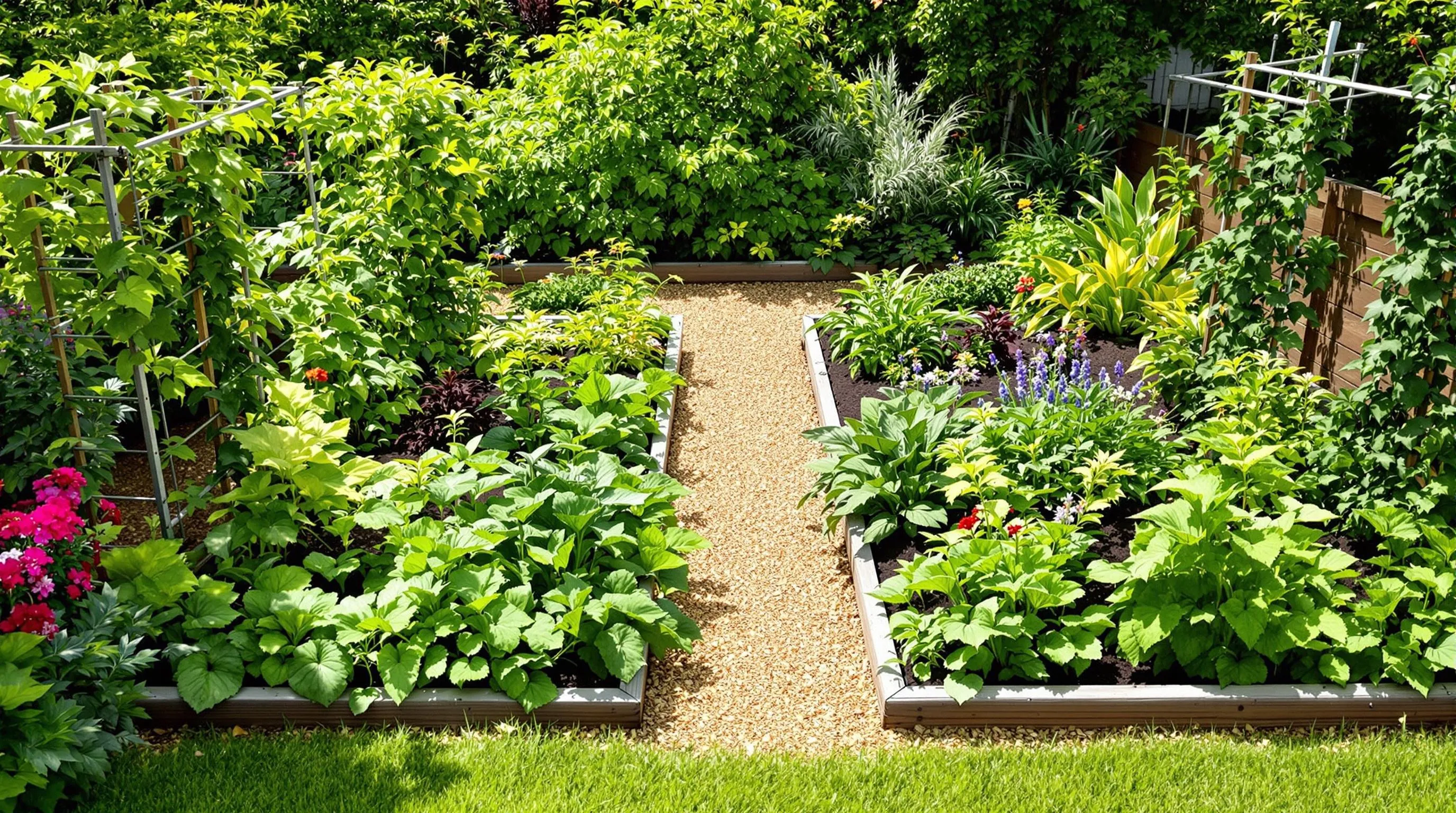
The traditional rectangle garden plot remains one of the most practical and efficient layouts for vegetable and ornamental gardens alike. This classic design maximizes growing space while providing clear organization that makes maintenance straightforward.
Maximizing Crop Rotation
Rectangular plots excel at implementing effective crop rotation systems, which help prevent soil depletion and reduce pest problems. Divide your garden into four distinct sections, each dedicated to a different plant family: legumes, brassicas, root vegetables, and fruiting crops. Each year, rotate these groups clockwise or counterclockwise to ensure plants don’t grow in the same soil for consecutive seasons. This systematic approach helps break pest cycles, improves soil health, and increases yields without chemical interventions. For best results, keep detailed records of what grows where each season, allowing you to plan rotations up to four years in advance.
Creating Efficient Walking Paths
Strategically placed paths are essential in rectangular gardens for providing access without compacting growing areas. Design main walkways at least 24 inches wide along the perimeter and through the center of your plot, using materials like wood chips, gravel, or stepping stones. Create narrower secondary paths (12-16 inches) between planting beds for easy harvesting and maintenance. These pathways not only improve garden functionality but also create visual structure. Consider installing irrigation lines alongside paths for efficient watering, and position trellises or supports along walkways to maximize vertical growing space. Well-designed paths transform a basic rectangle into an organized, productive garden that’s enjoyable to work in.
Raised Bed Garden Designs for Better Soil Control

Raised bed gardens offer superior control over soil quality and growing conditions, making them ideal for backyard gardeners dealing with poor native soil. These elevated growing spaces provide better drainage, warmer soil temperatures, and reduced weed pressure while creating defined garden boundaries that enhance your industry design.
Square Foot Gardening Techniques
Square foot gardening maximizes your raised bed productivity by dividing the space into 1’×1′ squares, each dedicated to a exact crop. This intensive planting method allows you to grow more food in less space—a 4’×4′ bed yields 16 distinct growing areas. Create a grid using string or thin wood strips, then plant according to spacing guidelines: one tomato plant per square, four lettuce plants, or 16 radishes. The organized approach makes succession planting simpler, as you can replant individual squares as crops finish without disturbing neighboring plants. For optimal results, fill your beds with a nutrient-rich mix of ⅓ compost, ⅓ peat moss, and ⅓ vermiculite to provide ideal growing conditions.
Multi-Level Raised Bed Arrangements
Multi-level raised beds add visual interest to your garden while serving practical purposes. By staggering bed heights—typically ranging from 12″ to 36″—you create microclimates that accommodate different plant needs. Taller beds work perfectly for deep-rooted vegetables like carrots and parsnips, while shorter beds suit shallow-rooted herbs and greens. Position the tallest beds on the north side to prevent shading smaller beds. This tiered approach also improves accessibility, reducing the need to bend over when tending to higher beds. Construct your multi-level system using weather-resistant materials like cedar, redwood, or composite boards, connecting levels with sturdy corner brackets. The varying heights create natural garden “rooms” that define your backyard space and draw the eye through your industry design.
Circular and Mandala Garden Layouts for Visual Appeal
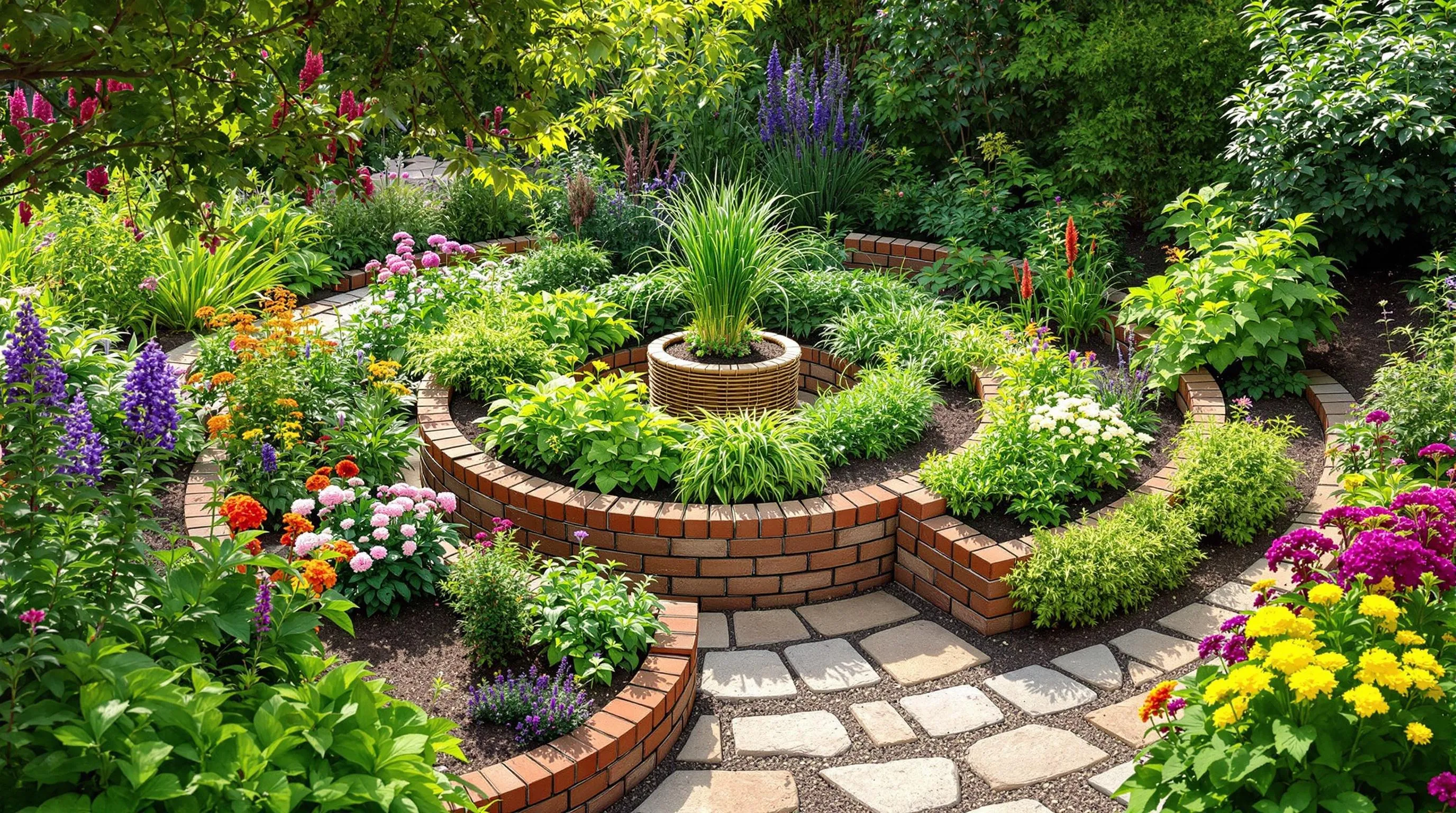
Circular garden designs create natural focal points that draw the eye and invite exploration in your backyard. These rounded layouts break away from traditional rectangular patterns, offering a refreshing aesthetic that mimics natural formations found in the environment.
Keyhole Garden Benefits
Keyhole gardens combine practicality with visual appeal through their distinctive circular design with a notch that allows easy access to the center. This innovative layout maximizes growing space while minimizing the area needed for maintenance. The central composting basket creates a self-sustaining system where nutrients naturally distribute throughout the bed as you add kitchen scraps and water. Keyhole gardens retain moisture exceptionally well, reducing watering needs by up to 30% compared to traditional beds. Their raised design also improves accessibility for gardeners with mobility challenges, allowing comfortable tending without excessive bending. For small spaces, keyhole gardens offer remarkable efficiency, producing important yields in areas as small as 6 feet in diameter.
Spiral Herb Garden Designs
Spiral herb gardens create stunning visual elements while offering practical microclimates for different herb varieties in a compact space. The design typically rises from ground level to about 3-4 feet high, creating varying sun exposure and drainage conditions. Plant drought-tolerant herbs like rosemary and thyme at the top where drainage is excellent, and moisture-loving herbs like mint and parsley at the base where water naturally collects. Building your spiral with locally sourced stones or bricks adds textural interest and reflects heat to create warmer pockets for Mediterranean herbs. The spiral’s compact footprint (usually 5-6 feet in diameter) makes it perfect for small gardens while still accommodating 15-20 different herb varieties. This three-dimensional growing space not only saves room but creates an eye-catching focal point that enhances your garden’s overall design.
Vertical Garden Solutions for Limited Space
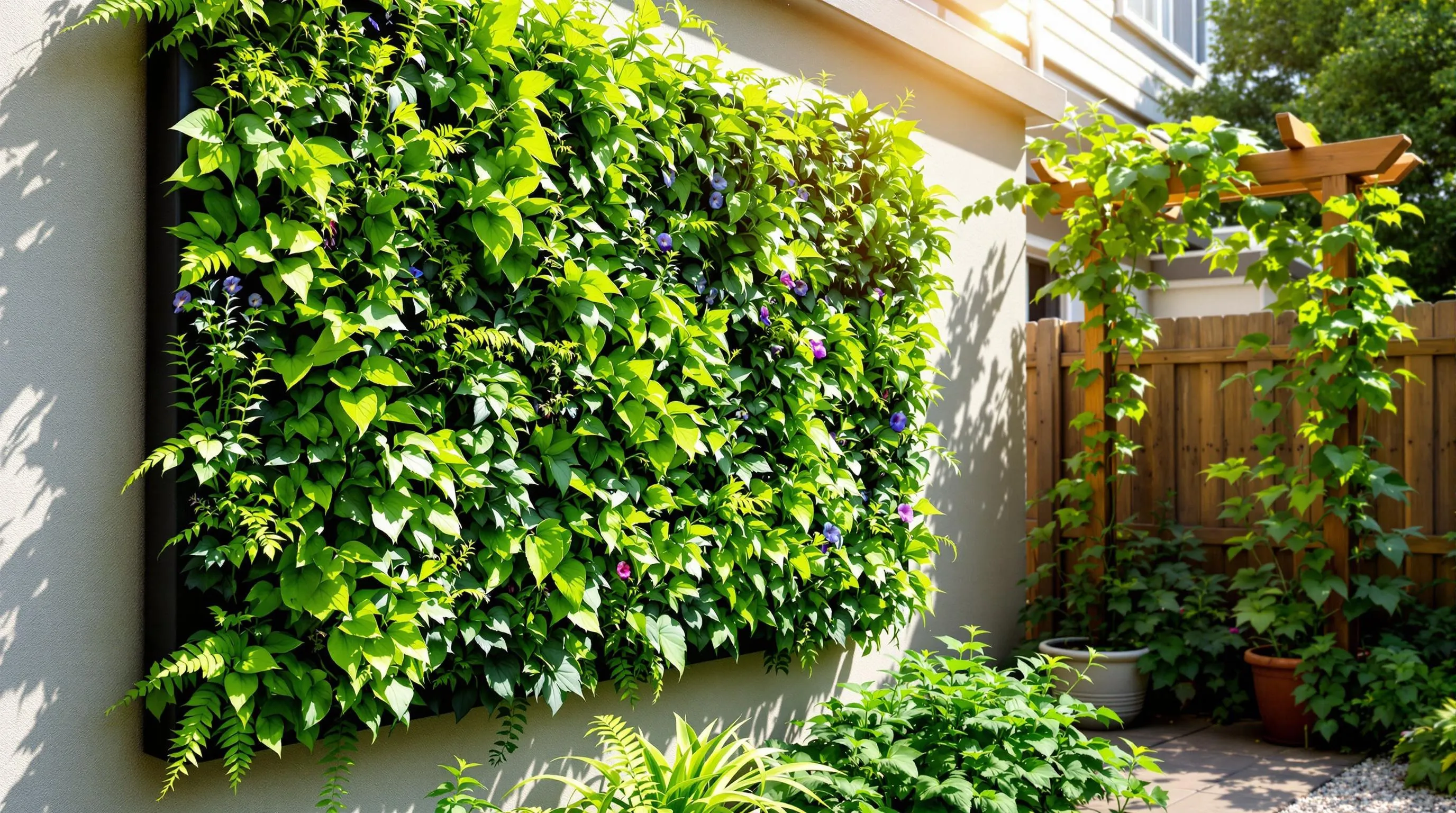
When ground space is at a premium, growing upward offers an innovative solution that maximizes your garden’s potential. Vertical gardening transforms walls, fences, and other upright structures into productive growing areas, dramatically increasing your planting capacity without expanding your footprint.
Living Wall Installations
Living walls bring dramatic visual impact to any garden space while making the most of vertical surfaces. These systems typically use modular panels or pocket planters attached to a wall or free-standing structure, creating a lush tapestry of plants. You’ll find specialized living wall kits that include irrigation systems, making maintenance surprisingly simple. Choose shallow-rooted plants like sedums, ferns, and small herbs that thrive in these conditions. For the best results, install your living wall in a location that receives appropriate light for your chosen plants, and ensure proper drainage to prevent water damage to supporting structures. Beyond their space-saving benefits, living walls also provide excellent insulation, reducing ambient temperatures and creating a cooler microclimate in your garden.
Trellis and Arbor Growing Systems
Trellises and arbors transform vertical space into productive growing areas while adding architectural interest to your garden. These structures provide essential support for climbing vegetables like cucumbers, beans, and peas, as well as flowering vines such as clematis and morning glories. You can install simple trellis panels against fences or walls, or create freestanding structures that define garden pathways. For maximum space efficiency, position trellises on the north side of your garden to prevent shading other plants. Arbors serve a dual purpose by creating inviting garden entryways while supporting vigorous climbing plants. Consider using cattle panels, bamboo, or repurposed materials to create custom trellis answers that match your garden’s aesthetic while significantly expanding your growing area.
Container Garden Arrangements for Flexibility
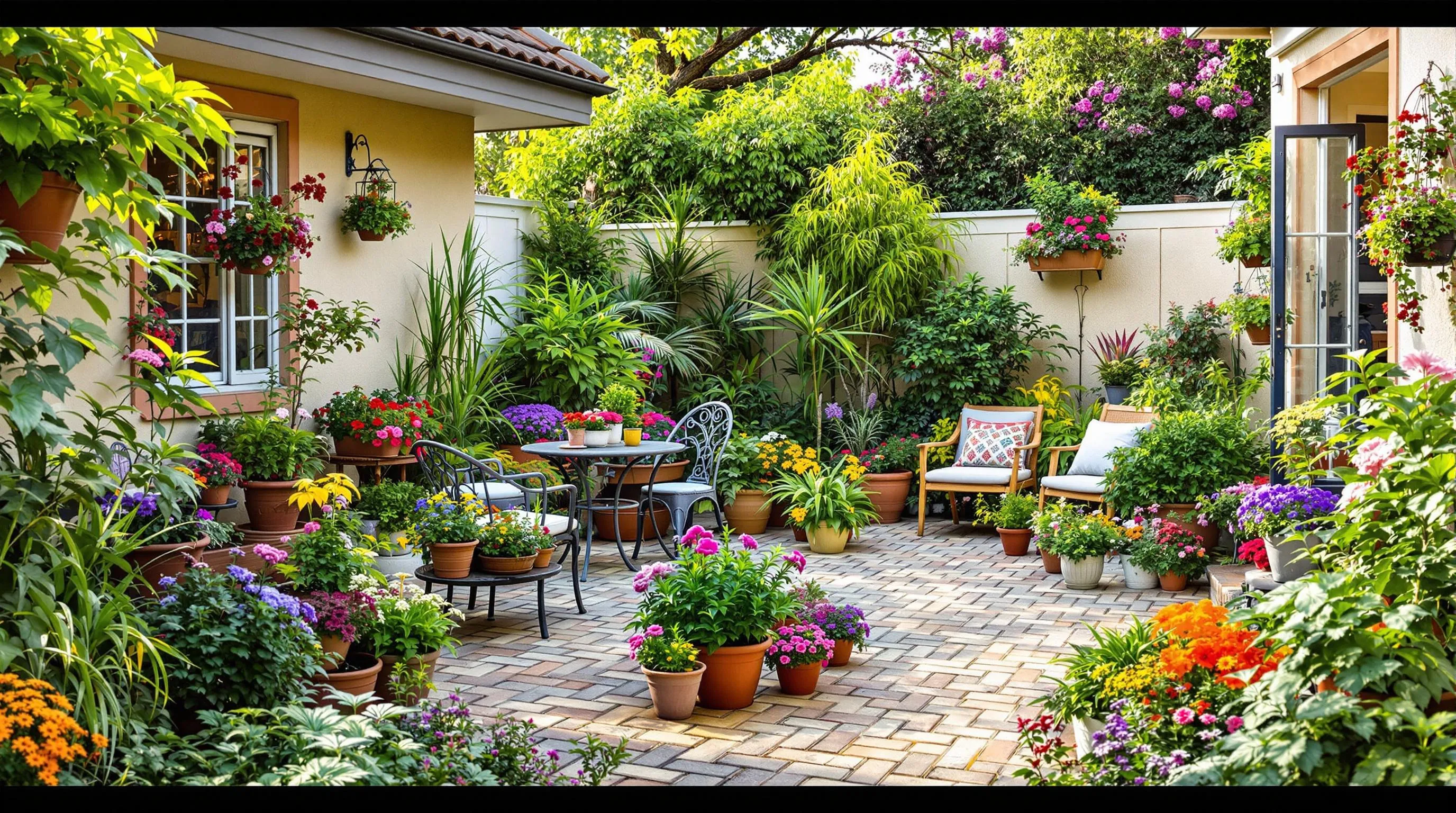
Container gardening offers unparalleled flexibility for your backyard space, allowing you to rearrange your garden as needed and grow plants regardless of soil conditions. These portable gardens let you experiment with different layouts and adapt to changing sunlight patterns throughout the seasons.
Grouping Containers by Watering Needs
Organize your container garden by grouping plants with similar watering requirements together to streamline maintenance and improve plant health. Place thirsty plants like ferns, impatiens, and begonias in one zone, while drought-tolerant specimens such as succulents, lavender, and rosemary can form another group. This strategic arrangement saves time during watering routines and prevents both overwatering and underwatering issues. Consider using color-coded containers or zones to make identification even easier at a peek. For maximum efficiency, position high-water-need containers near water sources and install drip irrigation systems with separate zones for different water requirements.
Creating Container Garden “Rooms”
Transform your backyard into distinct garden spaces by arranging containers to form outdoor “rooms” with exact purposes. Use tall containers with grasses or small trees to create natural dividers between a dining area and a relaxation space. Position large planters in a semicircle to establish an intimate conversation area, or line containers along pathways to guide movement through your garden. Mix containers of varying heights—placing taller plants at the back and shorter ones in front—to create depth and visual interest. Mobile containers on casters allow you to reconfigure these garden rooms seasonally or for entertaining. For cohesion, maintain a consistent color palette or container material throughout each “room” while varying plant selections to give each space its unique character.
Edible Landscape Designs That Blend Beauty and Function
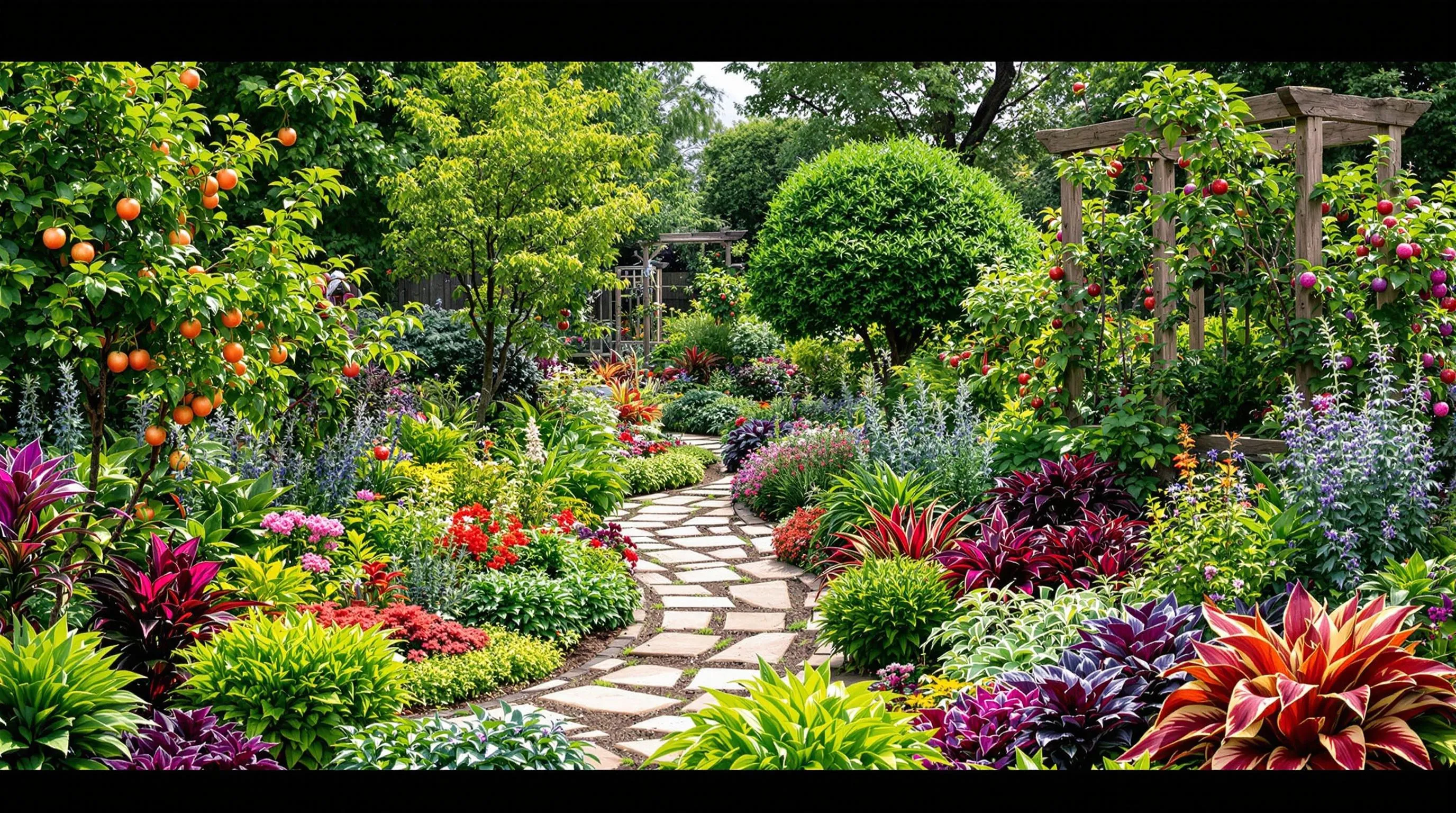
Edible landscaping transforms your garden into a productive space that’s as visually appealing as it is functional. By integrating food-producing plants into your ornamental design, you’ll create a sustainable backyard that nourishes both body and soul.
Incorporating Fruit Trees and Bushes
Fruit trees and berry bushes serve as exceptional anchor points in your edible industry design. Dwarf apple, pear, or cherry trees create natural focal points while producing bountiful harvests in compact spaces. Plant blueberry bushes as decorative hedges with the bonus of summer berries, or use raspberry canes as informal dividers between garden zones. For smaller yards, consider espalier techniques to train fruit trees against walls or fences, combining space efficiency with architectural interest. Underplant your fruit trees with shade-tolerant herbs like mint or lemon balm to maximize growing space and create attractive groundcover. Selecting varieties with outstanding seasonal features—spring blossoms, fall foliage, or winter branch structure—ensures your edible industry remains visually compelling year-round.
Mixing Vegetables with Ornamentals
Strategic integration of vegetables with flowering plants creates gardens that are both productive and beautiful. Rainbow chard, purple kale, and red-veined sorrel offer striking foliage that rivals ornamental plants while providing fresh greens for your table. Edge flower beds with compact vegetables like bush beans or dwarf peas to maximize growing space while maintaining clean lines. Plant climbing vegetables like scarlet runner beans on decorative trellises for vertical interest, combining their vibrant flowers with useful harvests. Artichokes and cardoons deliver dramatic architectural elements with their silvery foliage and bold flower structures. Interplant herbs among roses to deter pests naturally while adding fragrance and culinary ingredients to your industry. This thoughtful mixing of edibles and ornamentals creates a cohesive design that transitions seamlessly between purely decorative areas and productive growing spaces, proving that utility and beauty can perfectly coexist in your backyard garden.
Cottage Garden Layouts for Charming Disorder
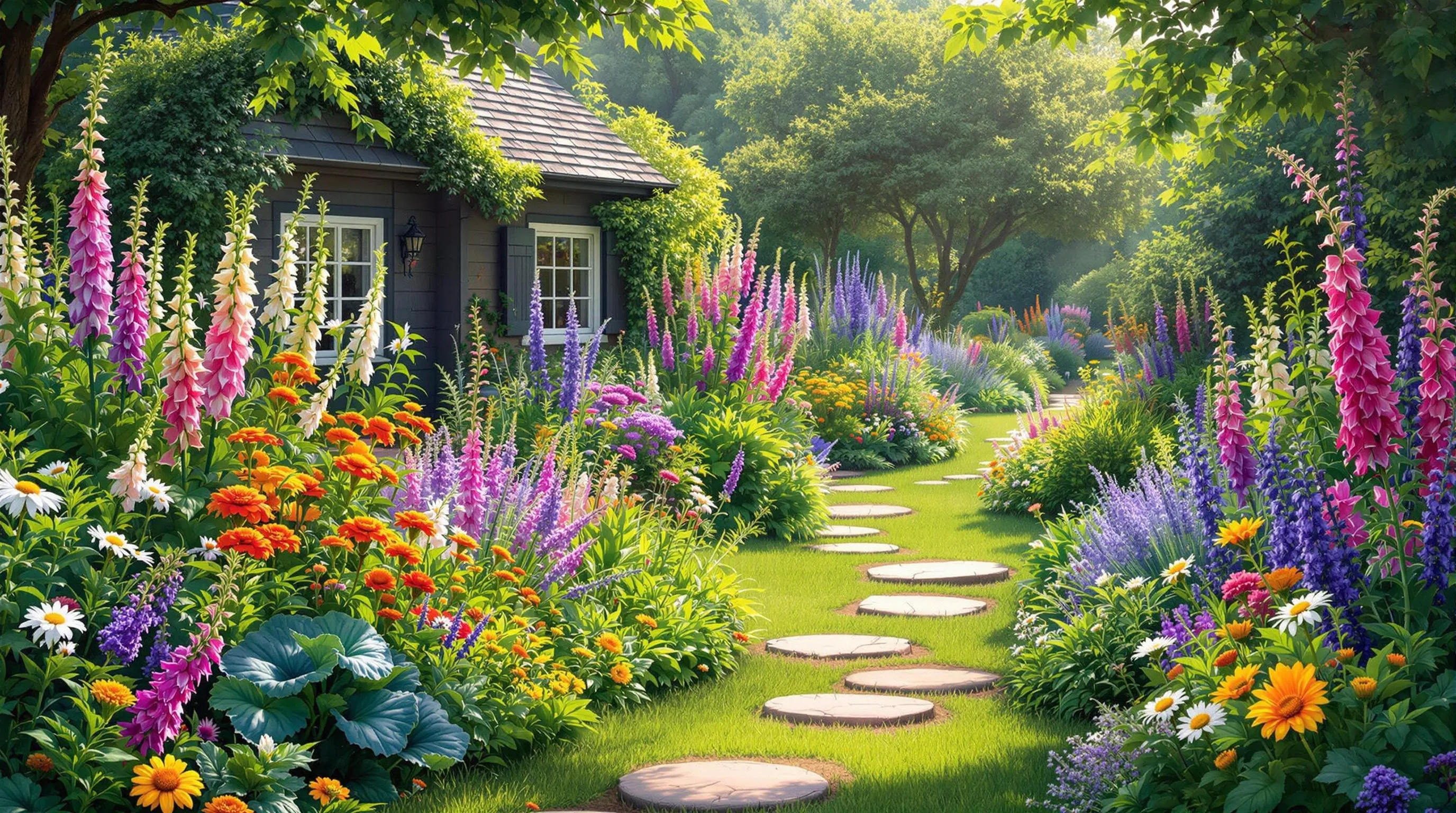
Cottage gardens embrace a deliberate yet beautiful chaos that creates a whimsical, lived-in atmosphere. This traditional English garden style combines ornamental and edible plants in a seemingly random arrangement that actually follows subtle design principles for maximum visual impact and ecological benefit.
Companion Planting Strategies
Cottage gardens thrive on strategic companion planting to create both beauty and functionality. Pair tall foxgloves and hollyhocks with mid-height lavender and catmint, then edge with low-growing thyme and chamomile for a multi-layered effect. Interplant vegetables like kale and rainbow chard among flowering perennials to deter pests naturally—marigolds repel nematodes while nasturtiums attract aphids away from your prized roses. Include flowering herbs such as dill, fennel, and borage to attract beneficial pollinators and predatory insects that help maintain garden balance. For lasting visual interest, mix plants with different blooming periods so something is always flowering throughout the growing season.
Creating Informal Pathways
Meander through your cottage garden with charm-filled informal pathways that enhance the sense of discovery. Use irregular stepping stones set in creeping thyme or chamomile to create paths that release fragrance when walked upon. Brick or reclaimed materials laid in curving patterns add character while practically defining garden rooms and providing maintenance access. Allow plants to spill slightly onto pathways—lavender, catmint, and dianthus softening edges—but maintain enough clearance for comfortable walking. Position fragrant plants like rosemary and lemon balm along path edges where brushing against them releases their scents. These unstructured pathways not only guide visitors through your garden but become an integral part of its romantic, relaxed aesthetic.
Japanese-Inspired Garden Designs for Tranquility
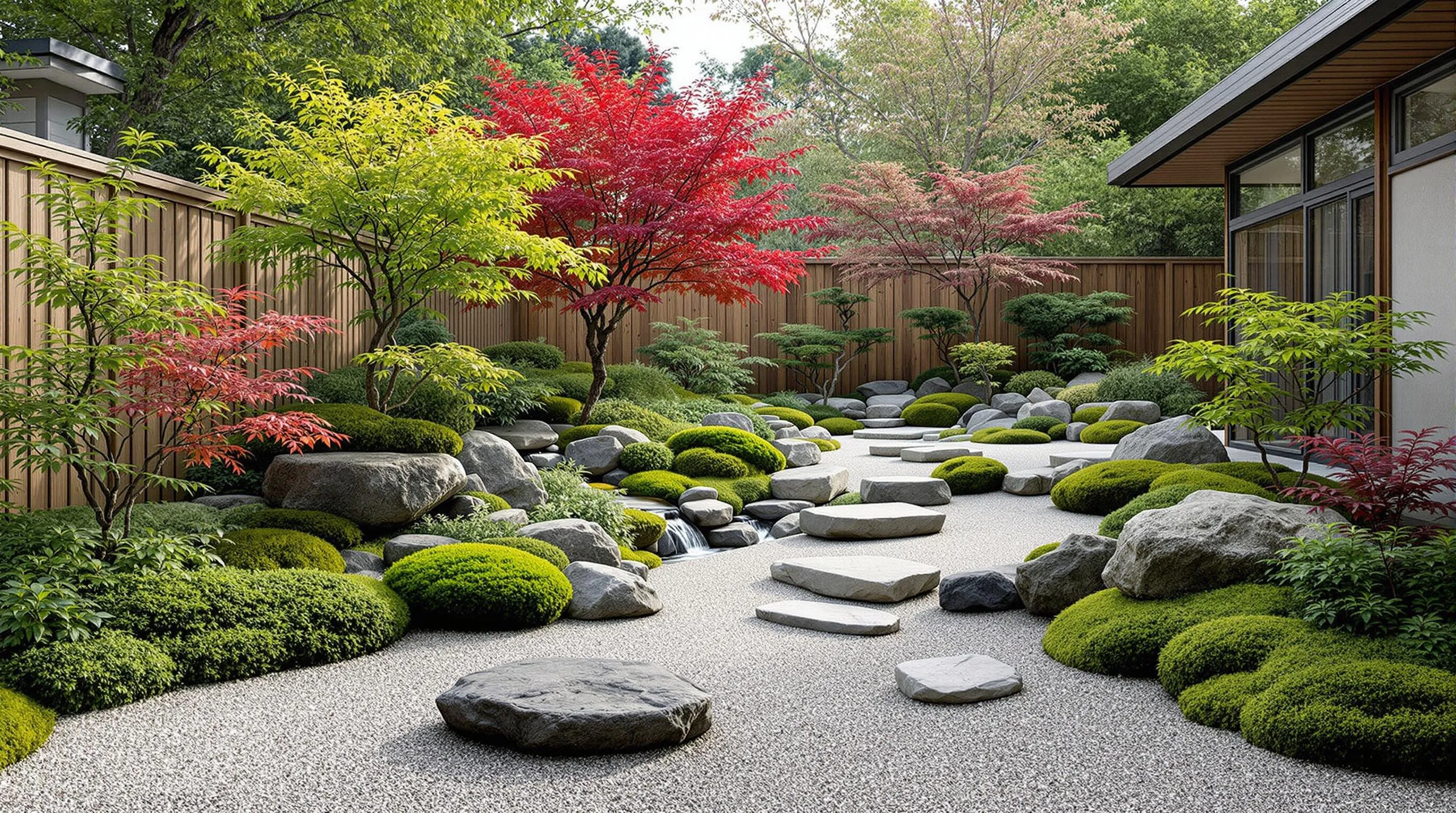
Transform your backyard into a peaceful retreat with Japanese garden design principles that prioritize harmony, balance, and contemplation. These gardens create spaces where you can escape the chaos of daily life and find moments of serenity in your own yard.
Rock and Gravel Features
Create a stunning zen-like atmosphere with carefully positioned rocks and raked gravel beds that mimic the rippling effect of water. Select varying sizes of rocks—from large boulders serving as focal points to smaller stones that represent islands or mountains in your miniature industry. Arrange them in groups of three or five following asymmetrical patterns that appear natural rather than contrived. For your gravel selection, opt for crushed granite in soft gray or tan tones, raking it regularly in circular patterns around rocks or in straight lines across open areas. This low-maintenance feature reduces weeding while providing visual interest throughout all seasons. A dry stream bed constructed with smooth river rocks can further enhance the meditative quality of your garden, guiding the eye through the space while symbolizing life’s journey.
Minimalist Plant Selection
Embrace the “less is more” philosophy with a carefully curated palette of plants that emphasize form over flash. Choose specimens with distinctive shapes like Japanese maples with their delicate, lacy foliage that provides stunning seasonal color transformations. Incorporate evergreens such as neatly trimmed azaleas or carefully shaped junipers to establish structure and year-round interest. Bamboo offers vertical elements and soothing rustling sounds, while moss creates a lush green carpet that softens rocky areas and thrives in shaded, moist conditions. Limit flowering plants to a few strategic locations, selecting varieties like camellias or Japanese iris that offer brief but impactful blooming periods. This restrained approach to planting creates a garden that feels intentional and contemplative, where each element has purpose and space to be appreciated fully.
Children’s Garden Layouts for Family Engagement
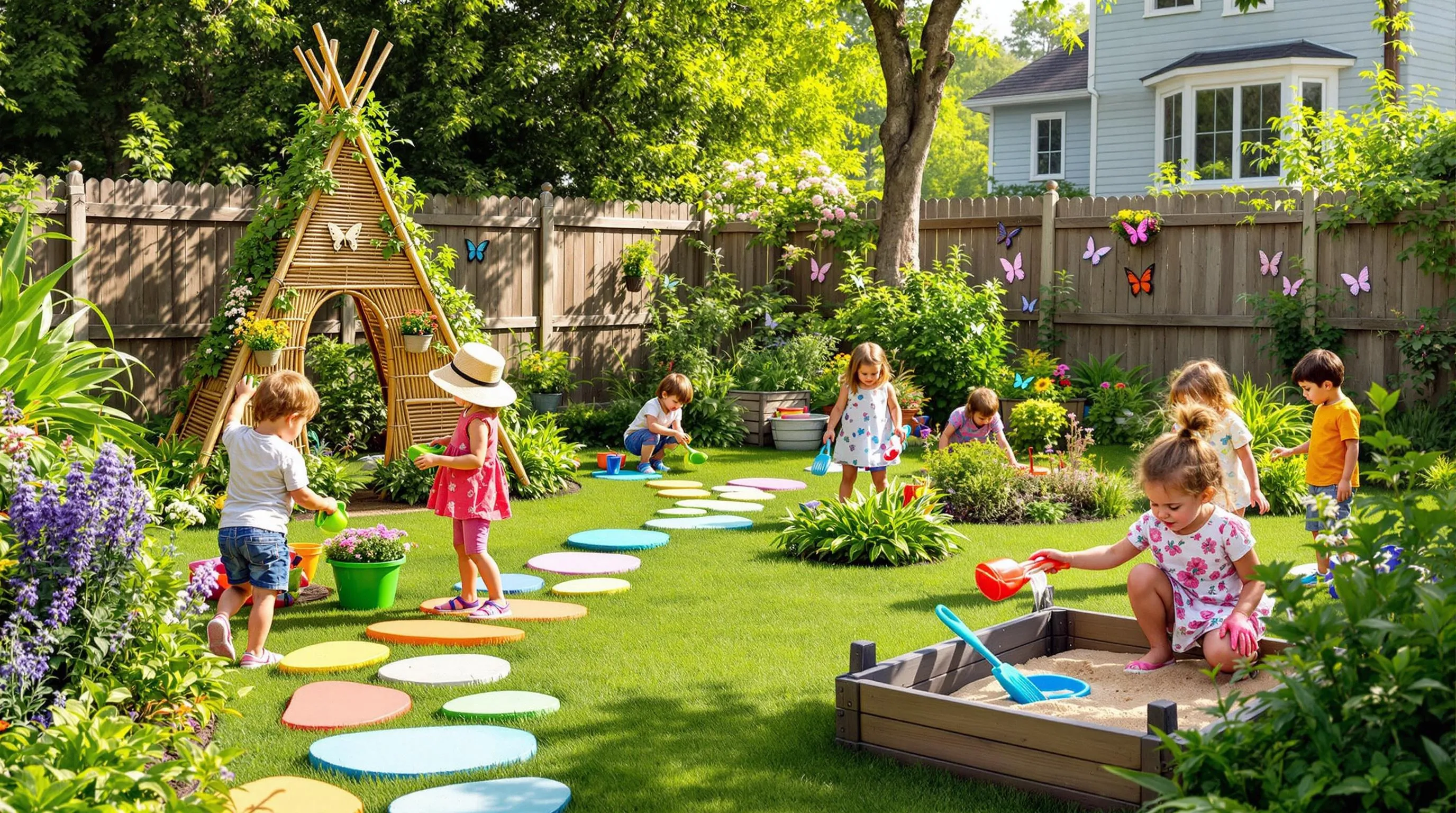
Creating a garden space specifically designed for children encourages family participation while teaching valuable skills about nature and responsibility. Kid-friendly garden layouts transform your backyard into an educational playground that sparks curiosity and nurtures young gardeners.
Playful Garden Elements
Incorporate whimsical features into your children’s garden layout to make the space both functional and enchanting. Create stepping stone paths using colorful concrete pavers decorated with handprints or mosaics that guide little explorers through the garden. Install a weather station with a simple rain gauge, thermometer, and wind sock to teach kids about climate patterns. Add a small tepee trellis made from bamboo poles where climbing beans or sweet peas can create a living hideaway. Designate a digging zone with child-sized tools and a dedicated sandbox area where kids can freely explore without disturbing planted areas. Butterfly puddle stations—shallow dishes with rocks and water—attract beneficial insects while teaching children about pollination. These interactive elements transform garden maintenance from chores into adventures, keeping children engaged throughout the growing season.
Easy-to-Grow Plants for Young Gardeners
Select fast-growing, hardy plants that provide quick results to maintain children’s interest and build their confidence. Sunflowers offer dramatic height within weeks and produce edible seeds, making them perfect starter plants. Cherry tomatoes yield abundant small fruits that children love to harvest and eat straight from the vine. Radishes germinate within days and are ready to pull in just 3-4 weeks, providing nearly instant gratification. Plant sensory herbs like woolly lamb’s ear (for touch), mint (for smell), and stevia (for taste) to engage multiple senses. Create themed beds like a “pizza garden” with tomatoes, basil, and oregano, or a “rainbow garden” with plants arranged by color from red strawberries to purple eggplants. Position these child-friendly crops in raised beds at appropriate heights for small gardeners, using colorful plant markers or picture labels to help pre-readers identify what they’ve planted.
Water-Wise Garden Designs for Conservation
Your backyard garden can become your personal sanctuary with the right layout design. Whether you choose a practical raised bed grid perfect for vegetables or a tranquil Japanese-inspired retreat you’ll find a style that reflects your personality and meets your needs. Remember that the best garden designs evolve over time as you discover what works in your unique space.
Start small with a container arrangement or vertical garden if you’re new to gardening. For more experienced gardeners try implementing a mandala design or edible industry that combines beauty with functionality. Whatever layout you choose the key is creating a space that brings you joy and connects you with nature right outside your door.





